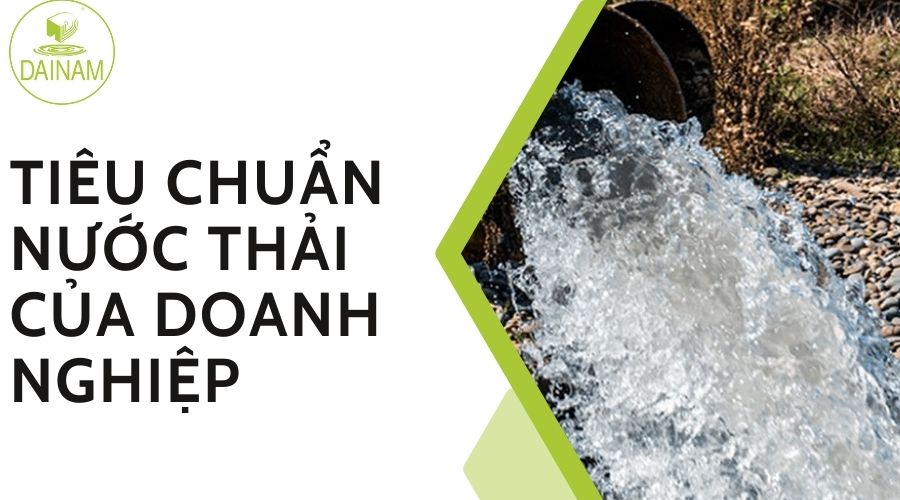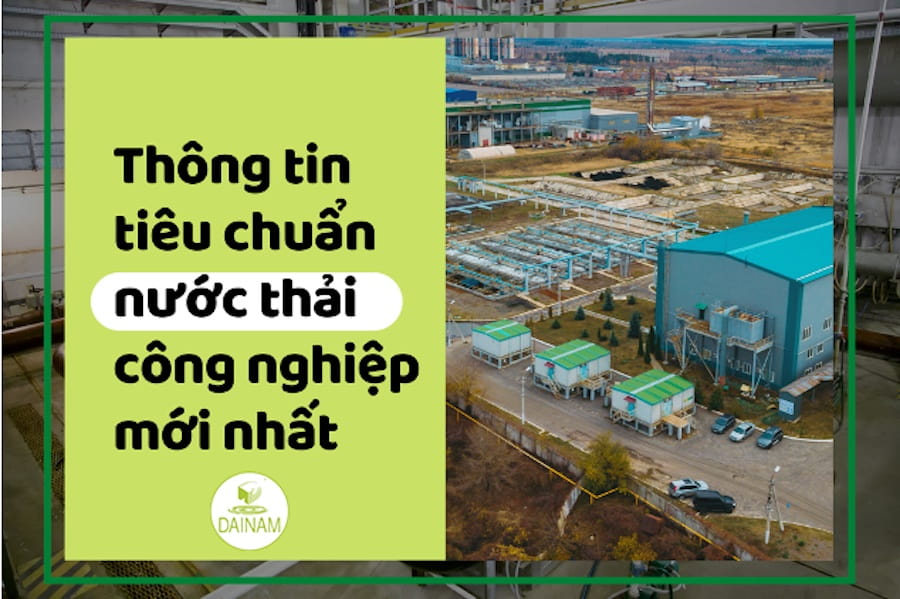Managing and treating industrial wastewater has become an urgent issue for the sustainable development of nations worldwide. Industrial wastewater standards have become a significant step towards protecting the environment and human health. Therefore, let's delve into the details of these wastewater standards with Dai Nam Environment.
1. Industrial Wastewater: Insights and Updates
The Latest Industrial Wastewater Standards: A Deep Dive into QCVN 40:2011/BTNMT and its Implications. Understanding the Essence of Industrial Wastewater and Navigating National Environmental Technical Standards for Compliance and Sustainable Operations.
1.1. What is industrial wastewater?
The latest industrial wastewater standard is QCVN 40:2011/BTNMT. Industrial wastewater is generated from the processes of businesses, manufacturing facilities, factories, industrial zones where technological processes occur, or arise from centralized wastewater treatment facilities. The sources of industrial wastewater can include urban drainage systems, rivers, streams, ponds, lakes, canals, ditches, and even coastal areas.
The establishment of industrial wastewater standards aims to provide a centralized basis for correct processing and addressing violations related to industrial wastewater generated from various sources. With the issuance of QCVN 40:2011/BTNMT, clear regulations have been set regarding pollution parameters within permissible limits for various components of wastewater. Accordingly, industrial wastewater encompasses various types of wastewater originating from:
-
The technological processes of manufacturing facilities
-
Industrial service providers
-
Centralized wastewater treatment plants connected to industrial facilities' wastewater
1.2. Why is industrial wastewater treatment a mandatory requirement?
Industrial enterprises in sectors such as chemical usage, textile and garment, paper production, and electroplating discharge industrial wastewater. In most cases, the wastewater has an average pH of 9-11, BOD and COD levels reaching up to 700mg/1 and 2500mg/1, respectively, as well as significantly elevated levels of suspended solids exceeding permissible limits by several times.
The industrial wastewater may contain pollutants such as cyanide exceeding permissible limits by 84 times, hydrogen sulfide surpassing limits by 4.2 times, and ammonia ions exceeding limits by 84 times. Consequently, pollution from this sector exerts a severe impact on the environment, particularly water bodies. Without proper wastewater treatment measures, the environment would face contamination if discharged directly.
In summary, industrial enterprises are obligated to treat wastewater before discharging it into the environment. Pollution and wastewater treatment are common societal concerns, and regulatory agencies and environmental authorities consistently enforce regulations and closely monitor environmental treatment issues. This underscores the necessity for the latest industrial wastewater standards.
2. The latest industrial wastewater standards
To address the escalating environmental pollution risk, let's now follow up to stay updated on the most accurate and latest industrial wastewater standards.
2.1. What is Industrial Wastewater Type A?
Industrial wastewater type A refers to the highest quality standard set for treated industrial wastewater, indicating that the water meets specific criteria for various parameters such as pH, biochemical oxygen demand (BOD), chemical oxygen demand (COD), suspended solids, and other pollutants. This classification signifies that the treated wastewater is suitable for reuse purposes, including domestic water supply, agricultural irrigation, or other non-potable applications.
2.2 What is Industrial Wastewater Type B?
Industrial Wastewater Type B refers to the category of treated industrial wastewater that meets specific regulatory standards for various parameters, albeit with slightly lower quality compared to Type A.

The industrial wastewater standards that businesses need to ensure
3. Maximum Permissible Pollution Level for Discharge into the Environment
For any type of wastewater, not just industrial wastewater, before being discharged into water sources, it must undergo effective treatment to meet specified standards and maximum permissible pollution levels. This is also one of the provisions of the latest industrial wastewater standards.
The calculation method for the parameters of industrial wastewater pollution is as follows:
Cmax = C x Kq x Kf
In there:
-
Cmax: Defined as the maximum permissible value of the pollutant parameter in industrial wastewater when discharged into the receiving water body.
-
C: The value of the specified pollutant parameter in industrial wastewater.
-
Kq: The coefficient of the receiving water body as stipulated.
-
Kf: The coefficient of the specified wastewater flow rate.
Standard table of industrial waste measurement formulas
The latest industrial wastewater standards have been provided in the article above. If you have any inquiries regarding industrial wastewater treatment systems or domestic wastewater, please continue to follow our articles on our website. Dai Nam Environment is one of the leading establishments with over 10 years of experience in designing and constructing wastewater treatment systems. We are committed to providing support and resolving any issues related to wastewater treatment processes according to the highest safety and transparency standards. Contact us for free consultation:
COMPANY NAME: DAI NAM ENVIRONMENT SOLUTIONS CO., LTD
HOTLINE: 0909 378 796
ADDRESS: 144 CHU VAN AN STREET, WARD 26, BINH THANH DISTRICT, HO CHI MINH CITY


.jpg)